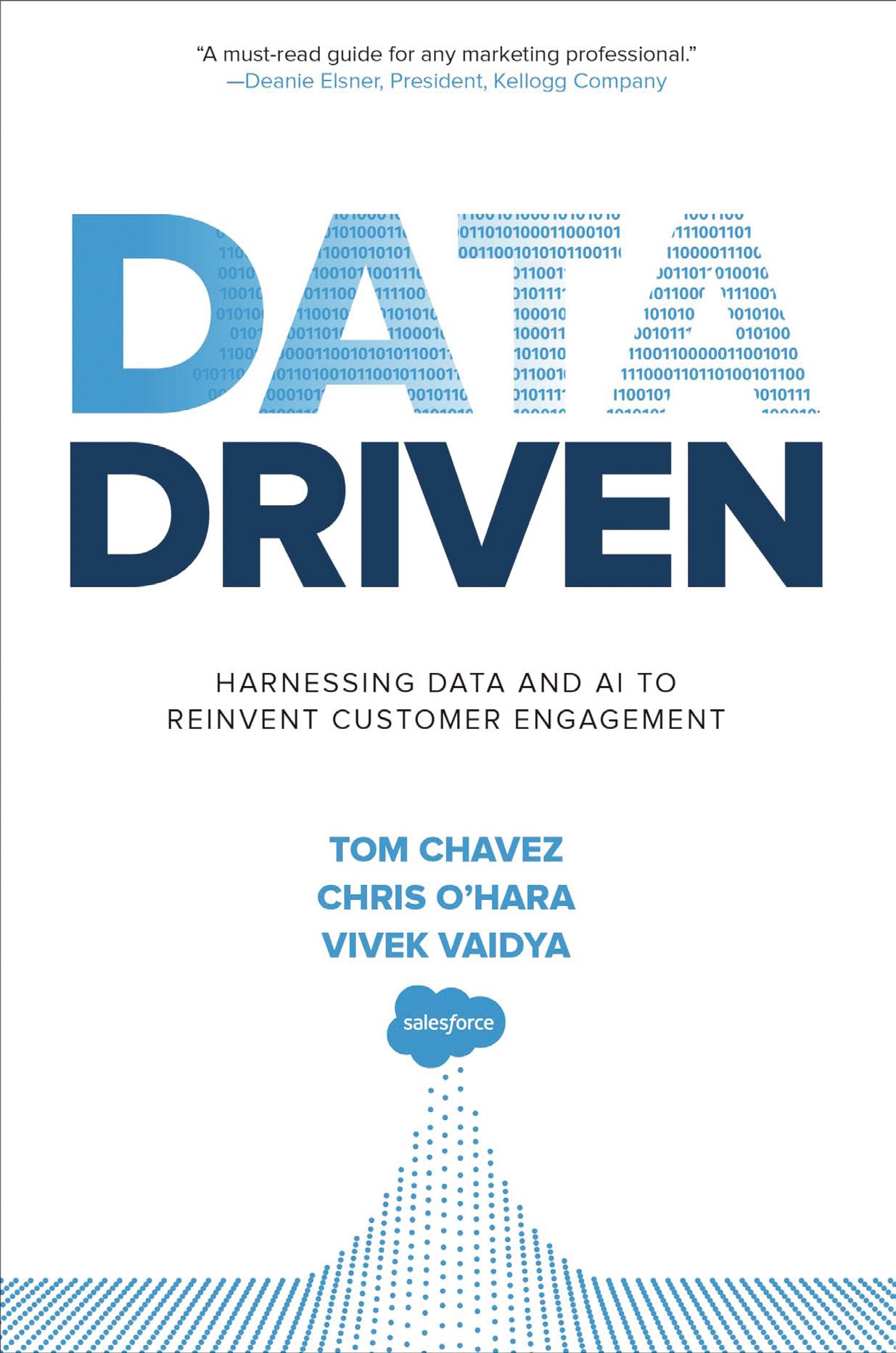










Get more of what you need with Melissa - Your Data Superstore.


More Consumers



More Businesses


More Demographics & Location Data










Need to customize a list for direct marketing? Looking to gain valuable insight into customer preferences? Want to enhance customer service? You’ll find the data you need, easily searchable and ready to download in our data marketplace.
300+ attributes including household income, age, home value, & more with name, address, phone & email.
Consumers 100s of selects including age, community involvement,
Executive contact information & company firmographics to identify the prospects most likely to buy.
100s of data attributes including owner’s name & address, other properties owned, sales price, parcel shape & census data.
Get the freshest data available, including email addresses, to market home-related goods & services.
& more.
Trusted address validation, identity verification and location intelligence tools for:


























PRESIDENT Publisher & Editor-in-Chief








Steve Lloyd - steve@dmn.ca
DESIGN / PRODUCTION
Jennifer O’Neill - jennifer@dmn.ca
ADVERTISING SALES
Steve Lloyd - steve@dmn.ca
CONTRIBUTING WRITERS
CB Insights Staff
Alexandra Conza
Brandon Luft
Stephen Shaw
LLOYDMEDIA INC.
HEAD
302-137
Phone: 905.201.6600
Fax:
EDITORIAL
DM
























































Environics Analytics (EA), Canada’s leading data and analytics company, released its enhanced behavioural data for tourism.
VisitorView empowers marketers and insights analysts with the most comprehensive, accurate, and actionable tourism intelligence available today.
As Canada’s tourism landscape evolves, VisitorView’s powerful new model delivers deeper insights into visitor behaviour to over 4,000 Canadian destinations. These data tell the tourism industry crucial information about their visitors: where they are coming from — domestic, US or international; what the peak travel months are in a region; the areas that experience the highest visitor activity; and the duration of the average visitor’s stay.
All these data can then be paired with PRIZM® and other indicators from EA’s suite of data, to achieve an understanding of a visitor’s demographics, behaviours and values. Updates and Additions Include:
❯ Enhanced Destination Accuracy –Anonymized cellular network data detects overnight stays with greater precision.
❯ Sharper Tourism Filters – Reduced noise from non-tourism movement and redefined trip length thresholds to better identify visitor activity.
❯ Seasonal Intelligence – New “Season” dimensions spotlight key trends such as summer and winter travel.
❯ Updated Canadian Population Model – A rolling 6-month lookback for home assignment, as well as a 3-week trip length limit.
❯ Aligned Methodologies – Consistent modeling across domestic, U.S., and international visitors enables seamless comparisons.
❯ Enhanced Geographic Detail for Destinations – Census Subdivisions (CSD), Census Metropolitan Areas (CMA), Census Divisions (CD), and custom Client Destinations are now available in addition to provinces and 91 tourism regions.
❯ Tailored Enhancements Across Borders
❯ VisitorView Canada – Aligns with industry standards by defining visitors as those traveling 40+ km from home.
❯ VisitorView U.S. – Improved origin estimation using two years of Visitor travel Survey data (VTS), resulting in superior trip matching, and integration of vehicle boarding entry data to enhance trip estimates.
❯ VisitorView International – Aligns with industry standards by defining visitors as those traveling 40+ km from home.
EA’s new VisitorView tourism suite gives the travel and tourism industry an even more detailed look into how, when, and where people travel, making it an essential tool for businesses to adapt to the constantly changing tourism landscape. Learn more here: https://environicsanalytics.com/en-ca/ data/behavioural/visitorview
Infosys, a global leader in next-generation digital services and consulting, and Adobe announced a strategic collaboration to jointly transform the marketing life cycle of global brands with AI.
Together, they will bring capabilities from Infosys Aster™ and Adobe to unify customer experience at scale, personalize content to enable business growth while also streamlining workflows for efficiency.
Infosys Aster™ is a set of AI-amplified marketing services, solutions and platforms that helps enterprises transform marketing into effective customer-champions and growth-partners. With creative services, experience design, digital commerce, MarTech orchestration, performance marketing and marketing operations, Infosys Aster™ brings AI-powered agility to the marketing value chain. Adobe empowers brands to deliver personalized, data-driven customer journeys across every touchpoint — combining content, data, and AI to create seamless, real-time experiences that drive loyalty and growth.
Infosys CMO Radar 2024 revealed that AIfluent CMOs are becoming a transformative force in business with 62 percent see their influence growing over broader corporate decisions. Together, Infosys and Adobe will orchestrate enterprise-grade marketing solutions, amplified by AI, that enables CMOs to:
Deliver Unified Experiences at Scale. Marketers can deliver unified brand experiences, across channels, touchpoints, and personas, that are timely, relevant, and engaging regardless of scale. Adobe’s RealTime CDP and GenStudio enable effective content creation, segmentation, and experience delivery. Infosys Aster™ brings
industry expertise and AI-amplified agility to marketing. This enables marketers to respond to changing customer behaviors, market trends, and business needs while orchestrating unified brand experiences across customers, channels, and markets. For example, a communication service provider used Adobe Marketing Cloud with Infosys Aster™ services to deliver in-app experiences and custom-target offers to millions of customers that were also amplified with matching multi-channel promotions. Digital engagement soared by 40 percent.
Personalize Content to Catalyze Growth. Launching hyper-targeted personalized campaigns across markets and segments with localized, scalable content strategies will be easier. With Adobe technologies, brands can deliver personalized content, drive real-time promotion and pricing based on customer behavior and cross-channel engagement insights. Infosys Aster™ helps create a shared digital foundation, by integrating MarTech and enterprise systems – crucial for optimizing the content delivery strategy. For example, a retail jewelry brand developed a personalized campaign with Adobe Experience Platform and Adobe Journey Optimizer and then harnessed Infosys Aster™ to create immersive experiences with dynamic 3D modelling and optimize content delivery. The result was a 27 percent improvement in campaign performance. Streamline Workflows for Efficiency. The integrated solution brings autonomous agents to plan, execute and optimize marketing tasks and workflows. With Infosys Aster’s AIpowered orchestration of Adobe technologies, marketers can automate content creation, streamline campaign workflows, improve channel efficiency, and increase campaign efficacy. A technology giant, for example, rebuilt their MarTech core with Adobe digital marketing solutions along with customer 360° views and analytics from Infosys Aster™ improving their workflows, and driving up campaign go-live efficiencies by 20 percent.
“AI, for marketing, has very quickly evolved from productivity- and creativity-amplifier to a true navigator for marketers. CMOs know that AI can be their partner in propelling business growth while helping them navigate the complexities of scaling deeply personalized content and simultaneously unifying the brand experience,” said Sumit Virmani, EVP and Global Chief Marketing Officer, Infosys. “This joint offering is integral to the customer experience personalization approach that we are driving at Infosys, and is positioned to be a foundational capability for CMOs to drive the growth-focused marketing they’ve always aspired to.”
Infosys Aster AI-amplified marketing suite and Adobe solutions uniquely enable the CMO to partner with the CIO to advocate for customer-first, AI-first experiences, and
marketing. The integrated solution leads the way with a ‘responsible by design’ approach to AI practices that strengthen brand integrity and foster trust with customers.
“In an attention-based economy where consumers and businesses are inundated with content across every channel, impactful creative personalized at scale is what will enable marketers to break through,” said Anil Chakravarthy, President, Digital Experience Business, Adobe. “Adobe and Infosys are bringing together creativity, marketing and AI innovations to transform Customer Experience Orchestration, streamlining the creation and delivery of compelling experiences across every touchpoint and channel.”
Douglas Hayward, Senior Research Director, Worldwide Customer Experience Services and Strategies, IDC, said, “Today’s CMOs need AI-enabled tools that understand consumers and business customers as individuals with context-specific needs, creating personalized on-brand offerings and messages that generate value for brand and customer alike. To drive sustainable value for both the brand and its customers, CMOs must plan, deploy and manage these tools rigorously across the entire customer lifecycle. That requires a new generation of AI-native marketing tools and services from both software makers and marketing services companies. This collaboration between Infosys Aster™ and Adobe aims to accelerate marketing excellence with AI and is in the right direction to address customer needs.”
Infosys is a global leader in next-generation digital services and consulting. Over 300,000 of our people work to amplify human potential and create the next opportunity for people, businesses and communities.
IKEA Canada has transformed its rewards from IKEA Family into a more innovative loyalty program that offers members a personalized experience tailored to their unique home furnishing needs.
Rewards from IKEA Family supports members throughout their entire journey, from dreaming, to planning, to bringing ideas to life in their homes. Members can now collect points, symbolized by the iconic Allen key, whenever they interact and shop with IKEA. These points can be redeemed for a variety of valuable rewards, including product discounts, delivery and assembly services, and even free food in the Swedish Restaurant.
“At IKEA Canada, we believe in fostering genuinely rewarding and personalized relationships with our IKEA Family members,” said De’ana Torresan, Customer Engagement & Loyalty Manager at IKEA Canada, “With over 5.8 million members in Canada, these are our most engaged and loyal customers. We

want to enhance their shopping journey by recognizing and rewarding them every time they interact and shop with us.”
Rewards from IKEA Family is free to join and allows members to earn points and unlock a variety of rewards — not only for their purchases, but also for the interactions they have with IKEA, both online and in-store. IKEA Family members can earn or collect the following points:
❯ One point for every $5 spent in-store or online at IKEA
❯ One point when logging into the IKEA Family profile on IKEA.ca or the IKEA app
❯ Five welcome points for new members who sign up for IKEA Family
❯ Two points when creating and saving a favourites list or gift registry
❯ 20 points when creating and saving a kitchen plan in the online planning tool
❯ 25 points when booking and attending a planning appointment
“Loyalty programs continue to inspire more frequent brand interactions, influence customer behaviour, and play a crucial role in supporting affordability,” said Jonelle Ricketts, Head of Marketing at IKEA Canada. “By offering personalized rewards and discounts, rewards from IKEA Family not only fosters brand loyalty but also makes our customers feel more valued.”
Since launching in Canada in 2012, the program has continually evolved to better serve the many Canadians with enhanced benefits, rewards and engagement
opportunities. Along with new rewards, members can continue to enjoy instant benefits such as member discounts, memberonly workshops and events, free regular coffee or tea in the Swedish Restaurant, and more. Founded in 1943 in Sweden, IKEA is a leading home furnishing retailer, offering a wide range of well-designed, functional home furnishing products at prices so low that as many people as possible can afford them. IKEA Canada is part of Ingka Group which operates 574 IKEA stores, shops and planning studios in 31 countries, including 16 in Canada. Last year, IKEA Canada welcomed 32.6 million visitors to its stores and 162.6 million visitors to IKEA.ca. IKEA Canada operates business through the IKEA vision — to create a better everyday life for the many people and does so through its local community efforts and sustainability initiatives.

New data from Lightspeed Commerce Inc. suggests a new consumer landscape is emerging — where price and quality still matter, but Valuespending is taking center stage.
Lightspeed’s survey of 2,000 consumers across the U.S. and Canada1 reveals that 92 percent of respondents consider themselves at least somewhat intentional with their purchases, while 40 percent say they are very intentional. Today’s shoppers aren’t just buying products — they’re also buying into values. Nearly half (45 percent) say brand values will play a bigger role in future purchases, signaling a clear shift toward mindful, purpose-driven consumption — what Lightspeed calls Valuespending.
Valuespending at the Checkout
While price (78 percent) and quality (67 percent) remain key priorities, more consumers (62 percent) now say it’s important that their purchases align with their personal values or identity.
They’re putting those principles into action: ❯ 27 percent have made purchases based on national pride
❯ 18 percent supported brands for charitable or social causes























❯ 18 percent chose products for their sustainability impact
❯ 15 percent factored in a CEO’s political alignment
“Consumers today are balancing cost with conscience,” said Dax Dasilva, CEO and Founder of Lightspeed. “It’s not always about the lowest price — it’s about choosing brands that reflect their values. And when those values align, loyalty can follow more easily. This new era of intentional spending — Valuespending — is reshaping retail and pushing businesses to be more transparent and authentic.”
For 32 percent of shoppers who report making values-based buying decisions, this is a new behavior. Driving this shift are a stronger belief that their spending has more impact than before (50 percent), a sense of living in a more divided world (45 percent), and influence from social media (23 percent).
Gen Z’s Fear of the ‘Wrong’ Brands
Younger shoppers are leading the movement. An impressive 96 percent of Gen Z consumers say they shop intentionally, with 66 percent noting that it’s important their purchases reflect their values. For this cohort, sustainability (37 percent), national pride (29 percent), and cultural alignment (26 percent) top the list of decision drivers. More than half (51 percent) say their most recent purchases were made with “thought and intention.” Social media plays a major role — 61 percent of Gen Z discover value-aligned brands online, far more than other generations.
Notably, 32 percent of Gen Z shoppers say they fear being judged for buying from the “wrong” brands — highlighting a generational mix of purpose and peer pressure reshaping the retail space.
Canadian consumers are taking principled spending even further. While just 16 percent of U.S. respondents say they’ve made purchases in the past six months based on local or national campaigns like “Buy American,” that number jumps to 38 percent in Canada.
Similarly, 45 percent of Canadian consumers say supporting local businesses best reflects their values, compared to 36 percent of U.S. shoppers. This trend points to a growing sense of national alignment at the checkout — especially in the context of trade tensions.
“These insights show us that consumer expectations are evolving,” Dasilva added. “From sustainability to social impact, the brands that listen, adapt, and ‘walk the talk’ can thrive in this age of Valuespending.”
Lightspeed is the POS and payments platform powering businesses at the heart of communities in over 100 countries. As the partner of choice for ambitious retail and hospitality entrepreneurs, Lightspeed helps businesses accelerate growth, deliver exceptional customer experiences, and run smarter across all channels and locations.
PC Optimum, one of Canada’s leading rewards program, and DoorDash, one of the world’s leading local commerce platforms, are working together to provide Canadians with a seamless new way to earn PC Optimum™ points.
Beginning now, PC Optimum™ members can earn five points for every dollar spent on eligible DoorDash orders delivered from their favourite restaurants and Loblaw-banner stores (including Real Canadian Superstore, No Frills, Loblaws, Shoppers Drug Mart, and more), offering Canadians a new way to earn.
“PC Optimum™ has always been about rewarding Canadians for the things they buy most often,” said Lauren Steinberg, Executive Vice President and Chief Digital Officer at Loblaw Companies Limited. “By partnering with DoorDash, we’re extending the value of our program beyond our stores and into even more moments of everyday life. Whether it’s groceries, everyday essentials, pharmacy, or now your favourite restaurant meals, we’re
making it easier to earn rewards wherever and however you choose to eat. This is another step in solidifying PC Optimum™ as the most rewarding and relevant loyalty program in the country.”
PC Optimum™ members can earn five points for every dollar spent on eligible DoorDash orders after linking their PC Optimum™ account to their DoorDash account. To celebrate the new way to earn, PC Optimum™ members will receive ten points for every dollar spent on eligible orders for the first three months, unlocking double the points-earning potential – in addition to 25,000 PC Optimum points™* for customers that are entirely new to DoorDash.
“Connecting customers with the best of their neighbourhoods is our bread and butter, whether that’s by ordering a delicious restaurant meal, a weekly supply of groceries, or a last-minute beauty haul,” said Kyra Huntington, Head of Strategy and Operations at DoorDash Canada. “By enabling customers to earn PC Optimum™ points on many purchases through DoorDash, we’re providing customers with an accelerated way for individuals to save on future shopping trips at Loblaw-banner stores. The more you order in, the more you can save the next time you go out.”
Ready to dig in? Here’s the dish on how the partnership between DoorDash and PC Optimum™ works:
Earn Points on Restaurants and More: Get five PC Optimum™ points for every dollar spent on eligible orders from your favourite restaurants and purchases at participating Loblaw-banner stores, including Real Canadian Superstore, No Frills, Shoppers Drug Mart, Maxi, Real Atlantic Superstore, and PC Express Rapid Delivery locations through DoorDash – plus an extra five points per dollar for the first three months.
Limited Time New and Existing Customer Launch Bonus: From now through July 16, DoorDash and PC Optimum™ are sweetening

the deal with two bonus offers. New DoorDash customers who create an account and link their PC Optimum™ account will unlock a whopping 25,000 points* after completing three eligible orders of $20 or more (15,000 points on your first order and 5,000 points on your second and third). Existing customers can link their PC Optimum™ account on DoorDash and get 5,000 points** on their first eligible order after linking and spending $20 before taxes and tips.
Earning more points at more places is easy — simply visit DoorDash’s app or website to link your PC Optimum™ account or sign up as a new member and start earning today.
DoorDash is one of the world’s leading local commerce platforms that helps businesses of all kinds grow and innovate, connects consumers to the best of their neighbourhoods, and gives people fast, flexible ways to earn. Since its founding in 2013, DoorDash has expanded to over 30 countries, using technology and logistics to shape the future of commerce. Through its Marketplace and its Commerce Platform, DoorDash is driving economic vitality in the regions it serves worldwide. Loblaw is Canada’s food and pharmacy leader, and the nation’s largest retailer. Loblaw provides Canadians with grocery, pharmacy, health and beauty, apparel, general merchandise,
financial services and wireless mobile products and services. With more than 2,500 corporate franchised and Associateowned locations, Loblaw, its franchisees, and Associate-owners employ more than 220,000 full- and part-time employees, making it one of Canada’s largest private sector employers.
Wavelo — a global leader in eventdriven software solutions for telecom — announced its Wavelo Solution Suite has achieved the TM Forum Customer Experience Management (CEM) Conformance Certification.
Wavelo firmly believes the future of telecom lies in event-driven architecture, and this esteemed certification validates the company’s alignment with industry best practices. It also affirms Wavelo’s expertise in enabling real-time operations, delivering transformative customer experiences, and unlocking new revenue opportunities through modern solutions designed for seamless system integration.
“Core to our mission of simplifying telecom for operators is an event-driven approach to streamlining interoperability with legacy systems,” said Justin Reilly, CEO of Wavelo.
Here to help with your direct marketing.
“This certification reinforces our position as the industry leader for event-driven systems within the Open Digital Architecture (ODA) Canvas. We are delighted to continue partnering with the TM Forum to accelerate the industry’s shift towards real-time outcomes in BSS/OSS.”
The certification and Wavelo’s receipt of the highest conformance rating involves a rigorous assessment by TM Forum, a leading global industry association for service providers and their suppliers. This ensures that Wavelo’s solutions adhere to established industry standards and frameworks, including TM Forum’s Open APIs, Business Process Framework (eTOM), and Open Digital Architecture.
Central to the Wavelo Solution Suite is its event-driven architecture. Designed to modernize legacy systems, it effortlessly integrates and automates diverse business and operational systems within existing infrastructures. This enables Communication Service Providers (CSPs) to respond to customer actions — such as service orders, payments, and support needs — in real time. The architecture empowers CSPs to deliver responsive, personalized experiences while improving operational efficiency, aligning closely with TM Forum’s vision for customercentric digital transformation.
Since 1959 DCM has been meeting the marketing and communication needs of Canadian organizations. Today our 2,500+ clients include 70 of the top 100 Canadian companies.
And we continue to be there for them, helping them simplify their marketing complexity, from highly personalized direct mail and triggered omnichannel campaigns to regulatory communications.
Looking for a Canadian communications partner you can trust to get the job done and delivered?
We’re here for you.

datacm.com























“TM Forum is pleased to certify Wavelo’s Solution Suite for real-time digital ecosystems,” said Andy Tiller, EVP for Products and Services at TM Forum. “This certification verifies that Wavelo’s event-driven customer journeys are aligned with the TM Forum ODA standards and best practices designed to enhance customer satisfaction through real-time engagement and personalization, improving customer experience and loyalty.”
This certification marks a significant milestone for Wavelo as it prepares to showcase its event-driven solutions at DTW Ignite in June 2025, reinforcing its commitment to innovation in the telecom industry. Wavelo, a subsidiary of Tucows, empowers communications service providers worldwide with a suite of cloud-based, data-forward software solutions designed to solve the telecom industry’s most persistent challenges. ■
Plusgrade, a Montreal-based global leader in ancillary revenue solutions for the travel industry, and ALL Accor, Accor’s booking platform and loyalty program, are proud to announce a strategic partnership to introduce an enhanced loyalty exchange solution for members of ALL Accor.
This partnership enables members to seamlessly convert points from other participating loyalty programs into Reward points, reinforcing ALL Accor’s commitment towards its members and more recognition in loyalty.
Loyalty members want more flexibility, simplicity and choice in how they use their points, and ALL Accor is making that a reality. With Plusgrade’s industry-leading exchange technology, ALL Accor members can convert rewards earned from institutions such as Bilt, Capital One and Citi loyalty programs — into Reward points. Plusgrade’s loyalty business unit, Points, which specializes in powering loyalty commerce for the world’s leading

travel brands, powers this solution.
“Giving loyalty members more ways to use their rewards makes their programs even more valuable,” said Ken Harris, Founder and CEO of Plusgrade. “At Plusgrade, we are dedicated to helping travelers maximize their rewards while driving ancillary revenue for our partners. By working with Accor, we’re bringing even greater flexibility and choice to ALL Accor members worldwide.”
ALL Accor continues to redefine what it means to be rewarded and recognized, offering members a seamless and rewarding experience across its vast global network of 45 hotels brands and 110+ partners. Built on transparency, flexibility, and a clear, unchanging points scale, the program ensures members always know the value of their rewards. ALL Accor empowers its members to transform their rewards into meaningful and personalized experiences.
Mehdi Hemici, Chief Loyalty & Ecommerce Officer, Accor comments: “Our partnership with Points, a Plusgrade company, is a key milestone for ALL Accor. It answers our members’ desire for more than discounts by delivering unforgettable experiences. Leveraging Plusgrade’s cutting-edge technology alongside ALL Accor’s brand strength, we’re creating innovative ways to recognize and reward our members while expanding value across industries and regions.”
This partnership is the latest example of ALL Accor and Plusgrade’s commitment to delivering innovative loyalty solutions that enhance member engagement while driving revenue growth for partners. By integrating its expertise in travel loyalty and exchange solutions, Plusgrade is shaping the future of customer rewards and experiences.
Plusgrade powers the global travel industry with its portfolio of leading ancillary revenue solutions. Over 250 airline, hospitality, cruise, passenger rail, and financial services companies trust Plusgrade to create new, meaningful revenue streams through incredible customer experiences. As the ancillary revenue powerhouse, Plusgrade has generated billions of dollars in new revenue opportunities across its platform for its partners, while creating enhanced travel experiences for millions of their passengers and guests. Plusgrade was founded in 2009 with headquarters in Montreal and has offices around the world. ALL Accor is a booking platform and loyalty program embodying the Accor promise during and beyond the hotel stay. Through the ALL.com website and app, customers can access an unrivaled choice of stays from more than 45 Accor brands in 110 countries, always at the best price. The ALL Accor-loyalty program gives members access to a wide range of rewards, services and experiences, along with over 110 renowned partners.
September 11th, 2025
OBA CONFERENCE CENTRE
20 Toronto Street, 2nd Floor, Toronto, Ontario.
and Discover Insights on the Future of Loyalty & Rewards Programs, Perks and Points Campaigns, Customer Experience Offers and all aspects of customer retention and engagement.
An All-Keynote Senior Executive summit, located in the heart of Toronto, leaders in all aspects of data-driven loyalty and rewards will examine the workings of today’s consumer engagement and reveal the near-future in the ever-expanding, analyticspowered C-Suite. The universal torrent of data available today has become the foundational tool of informed decision making for marketers in all sectors, but none more than loyalty programs and rewards platforms. Data and the evaluation of data connects across department and functions. Each Keynote presentation and panel discussion will explore and reveal real-world, actionable paths to enable all aspects of the transformative power of million-member loyalty brands and consumer rewards.

See the full speaker roster and sign up now to save with Early Bird Registration discounts for single, dual or team registrations.



BY ALEXANDRA CONZA
Across the marketing industry, artificial intelligence has become the new operational standard for high-performing teams. While the most visible (or at least, most touted) example of AI-generated copy and images may get most of the attention, the true measure of its impact lies in the less glamorous, operational side of the work: project timelines, review cycles, and the time it takes to ship creative into new markets. These changes enable marketing teams to work faster and scale their efforts, freeing them from manual tasks to focus on the strategic work that delivers better business results.
This operational shift is especially clear in how marketing teams approach global campaigns. AI-powered translation and localization, for example, transforms what was once a final, time-consuming bottleneck into an integrated part of the core strategy. By embedding this capability directly into their
workflow, marketing teams are scaling campaigns across new markets with greater speed and efficiency. The outcome is a direct and measurable impact on campaign timelines, global reach, and ultimately, marketing ROI.
For many brands, this means shaving days or even weeks off the production calendar by eliminating manual, repetitive work. At the global marketing agency Wunderman Thompson, for instance, one unit turned what used to be a slow email relay into a sprint by using Smartcat’s translation and localization AI to automatically surface approved brand terminology and automate project workflows. The languagelearning company Babbel saw a similar process transformation by connecting its content systems directly to Smartcat, transforming a clunky, ticket-driven workflow into a seamless pipeline. This single change gives the team back roughly thirty-one staff hours every month. The effect on project timelines is just as direct. Travel brand Welcome Pickups, for instance, cut its site-translation turnaround time by more than
half. When routine tasks like these disappear, marketing can finally move at the speed of opportunity.
Beyond creating operational efficiencies, the speed delivered by AI also drives top-line growth. For travel brand Welcome Pickups, the impact was immediate: its localized landing pages booked sixty-six percent more rides than their pre-pandemic equivalents, a lift that added roughly two percent to the company’s overall revenue. Wunderman Thompson converted the same efficiency into income. With the same headcount, the agency now handles thirty percent more client projects, turning surplus capacity into fresh billable work.
Ultimately, these are just a few examples of how AI can do more than simply trim expenses from a budget, but create measurable topline growth that finance leaders can see on the balance sheet.
AI also fundamentally changes the economics of scaling a brand and
content globally with speed and consistency. Babbel, for example, serves ten million learners in fourteen languages. Its content spans everything from push notifications to video scripts, yet the company maintains a single, consistent voice through an automated translation and review workflow.
This ability to manage complexity at scale also extends to client work. Wunderman Thompson manages Amazon storefronts for one hundred fifty clients across nine marketplaces, relying on AI-powered glossaries and translation memory to keep product pages compliant and conversational. The financial efficiencies even create their own opportunities for growth; the thirty-two-thousand-dollar savings Welcome Pickups realized in three quarters funded new language launches, allowing the brand to enter fresh markets without ballooning its budget. With AI platforms like Smartcat handling the heavy lifting, geography turns from a barrier into a variable that marketers can adjust as easily as ad spend.

The shift to AI-powered marketing is already well underway. Leaders who want to define the future of marketing rather than react to it must integrate AI with a clear strategy. Here are three strategic principles to help guide that process.
Before deploying AI at scale, it’s crucial to have the right foundation in place. AI is only as effective as the data it works with, so start by strengthening your data infrastructure. Once your data is clean and accessible, onboard your AI systems with the same care you would a new employee. This means establishing clear brand guidelines, strict data privacy protocols, and firm ethical standards from day one to create complete alignment with company values. This protects both brand integrity and customer trust.
The most effective marketing teams use AI to eliminate
repetitive work, not to replace strategic thinking or creativity. While AI is exceptionally good at automating processes and analyzing data, the creative vision and strategic direction behind a great campaign remain fundamentally human. At Smartcat, our focus is on this exact partnership: leveraging AI to manage repetitive processes like translation and content adaptation, which in turn frees up marketers to focus on the bigger picture. This approach requires consistent human oversight to ensure that the tone, cultural relevance, and creative quality of the final output meet brand standards.
feed back into future training, and that strict boundaries are in place to keep information properly siloed. Data handling practices vary widely across the industry, so it’s important to be discerning and inquire directly about how vendors manage client information. Adhering to strict data privacy standards is essential for maintaining long-term security and compliance.
ALEXANDRA CONZA is Senior Strategic Content Marketing Manager at Smartcat. 1 2 3
How data is handled is a critical point of difference among vendors. As organizations integrate AI, they must ensure that their own proprietary and sensitive customer data will not be used to train external models. Organizations need to be sure that proprietary and sensitive data processed by AI won’t
Marketing teams that have begun integrating AI into their operations are seeing impressive gains in speed, revenue, and global reach. Yet, the demand for more personalized content across markets continues to accelerate. Leaders expect teams to deliver more content, in more languages, across more formats, with fewer people and tighter timelines. Meeting this challenge requires a new form of intelligence that moves beyond just automation. In response, the next frontier of this technology is emerging in the form of autonomous AI agents. These systems, like those Smartcat is building, are being
designed to manage the entire global marketing process and go far beyond mere task execution. They can operate continuously, identifying market opportunities and launching personalized campaigns with a level of speed and scale impossible for human teams alone. This ‘always-on’ model allows an AI agent, trained on a company’s unique brand voice and guidelines, to manage a complete content workflow from creation to deployment. The agentic approach will fundamentally reshape how marketing teams operate globally. It creates a unified system where human expertise constantly refines an agent’s performance, automating the heavy lifting of global content operations. This transformation turns a series of complex, fragmented tasks into a single, intelligent process that democratizes global reach. The result is a future where marketers can execute their most ambitious ideas without the traditional barriers of operational friction, language, or scale.


In today’s hyper-connected world, audiences aren’t just buying products, they’re buying beliefs, stories, and shared values.
With growing awareness of climate change, social inequality, and global crises, consumers have shifted from asking What does this brand sell? to What does this brand stand for?
This shift signals a new era of accountability, where public relations must evolve from reactive messaging to proactive mission-building.
Purpose-Driven PR is no longer a niche strategy; it is a vital tool, not just for reputation management, but for cultivating long-term, authentic relationships between brands and people.
Why values matter more than ever
Gone are the days when great pricing and eye-catching ads were enough.
Today’s consumers want to know if a brand respects their values, whether it supports real causes, and how it contributes to making the world better, not worse.
Studies and real-world behavior show a growing loyalty toward brands that take a stand on social and environmental issues. Purpose has become a strategic differentiator, especially among younger generations who are more socially and politically engaged.
Whether it’s choosing a chocolate bar or subscribing to a telecom provider, consumers increasingly align their spending with their ethics.
From messaging to meaning Purpose-driven public relations go beyond buzzwords and seasonal campaigns. It’s not about wrapping your brand in a good cause for publicity.
It’s about building a brand that lives its values, from boardroom decisions to frontline interactions.
This means integrating purpose into every corner of your business, from leadership and employee culture to sourcing, partnerships, and content
strategy.
When done right, purposedriven PR becomes strategic storytelling — real, consistent, and rooted in daily practices. And in the age of transparency, anything less will be seen through quickly.
Case studies in purpose-led branding
Global and regional brands alike are embracing purpose-led communications to drive impact and loyalty:
❯ Tesla has built its narrative around sustainability and innovation, reimagining what mobility can mean in a climate-conscious era.
❯ Patagonia didn’t just talk about environmental responsibility, it donated the company’s ownership to a climate trust, aligning purpose with practice.
❯ Nike took a stand on social justice, leveraging high-profile campaigns that spoke directly to younger, values-driven consumers.
❯ Ben & Jerry’s embedded activism into its identity, making every product and campaign an extension of its values.
These brands didn’t just market their values — they operationalized them.
In Saudi Arabia, a profound transformation is underway.
Driven by Vision 2030, purposeled PR is fast becoming a strategic imperative across industries:
❯ Aramco has allocated over $370 million toward social investments in education, health, and cultural infrastructure, aligning national growth with global responsibility.
❯ Roshn, through its CSR program YUHYEEK, is focused on livability and cultural heritage, positioning itself as a brand that empowers communities.
❯ Zain KSA actively supports women in STEM and youth development, integrating purpose into workforce transformation.
❯ Bupa Arabia leads with wellness initiatives like “Live Right,” while supporting inclusive sports events such as the Bupa Padel Tournament, enhancing community health through action.
❯ Beauty brands like MZN Bodycare and CHAMPION are reframing personal care with clean, ethically sourced ingredients, championing a movement of sustainable self-care.
These initiatives are not just CSR initiatives, but they are central to brand identity and competitive strategy.
Values are not an add-on Some may still see the purpose as a short-term marketing move. But the reality is clear: values are a long-term investment. They’re the compass that guides decisions, not the garnish on a campaign.
When a brand lives by its values — internally and externally — it builds trust, attracts talent, nurtures customer loyalty, and strengthens resilience in a volatile world.
But authenticity is everything. Pretending to care without real action is a fast track to reputational damage. The digital age leaves no room for empty gestures.
As W7Worldwide Strategic Communications Agency puts it: “You cannot communicate what you don’t live.”
So, how can brands get it right?
Here are six practical steps to embed purpose into your communications strategy:
1. Start from within - If your team doesn’t live the values, your audience won’t buy them. Internal culture must reflect the external message.
2. Turn values into stories - Use real stories, not slogans. Show the human side of your brand through genuine narratives and relatable voices.
3. Align words with actions - Make sure your hiring practices, partnerships, sourcing, and community
efforts reflect your stated values.
4. Train your spokespeopleAuthentic communication requires confident, valuesdriven storytelling across all levels of your organization.
5. Design experiences, not just campaigns - Today’s audiences want to participate. Interactive campaigns, events, and activations offer stronger engagement than traditional advertising.
6. Define and protect your core values - Know what you stand for and stay consistent, especially in times of challenge or controversy.
Final thought: Purpose is the new PR currency
Purpose-Driven PR is not a trend, it’s the new foundation for sustainable success.
In a landscape shaped by transparency, trust, and shared ideals, brands that lead with values will always lead the market. At W7Worldwide, we believe that true impact starts from the inside out. That’s why we help organizations craft purposeful strategies rooted in who they are, not just what they sell. Because when a brand’s actions align with its values, trust follows, along with relevance, influence, and a lasting legacy.
ABOUT W7WORLDWIDE
W7Worldwide is an award-winning independent GCC marketing communications consultancy based in Saudi Arabia. Our understanding of the local market converged with our global reach and knowledge enables us to bridge our clients with their audiences effectively. We are aligned by the objective of filling the gap in communication that exists in the local market. Therefore, our specialty lies in building bridges that sustain relationships and create brand reputation and value through innovative approaches. Our array of services is, but not limited to:
❯ Reputation Management
❯ Stakeholder Mapping
❯ Crisis Management
❯ Media Relations
❯ Public Relations
❯ Social Media
❯ Marketing and Brand solutions
For more information about W7Worldwide please visit http://www.w7worldwide.com.


BY STEPHEN SHAW
Chris O’Hara leads the customer data solutions practice at SAP and is the co-author of Data Driven: Harnessing Data and AI to Reinvent Customer Engagement.

ack when mainframe computers ruled the world customer data at the individual level was kept under lock and key by the high priests of IT. Marketers were usually given only limited access — sometimes no access at all. Computing time was just too precious to waste on non-operational uses of the data. Busy IT staff gave low priority to ad hoc queries or list pull requests coming from marketing. It was the Age of Big Iron — siloed data stores, large and very pricey Relational Database Management Systems (think Oracle) — monolithic legacy applications and systems designed to keep the lights on (think SAP).
IT resistance to marketer’s pleas for data began to lessen by the early 1980s as the cost of computing began to drop. Database marketing suddenly became fashionable. And then CRM systems stormed the market in the 1990s (think Siebel), generating new sources of customer sales and service data. By the early 2000s SalesForce had proven that CRM could be served up as a cloud-based software service instead of a costly on-premise system. CRM became more affordable for a broader range of businesses. Now all kinds of personally identifiable customer data was available to marketers. But it was the explosion of Big Data in the mid-2000s, spawned by the Internet, that began to throttle internal data management systems. Traditional data warehouses simply couldn’t cope with the incoming deluge of webbased data in its many diverse forms. So a new form of database came along to deal with the problem: data lakes (later evolving into hybrid “data lakehouses”) designed to serve as vast catch-all basin for raw data that could be
directly queried by end users.
Yet even with all of these technology innovations, the goal of a “Single View of Customer” — “One Version of the Truth” — the so-called “360 degree” view — remained elusive, more an aspiration than a reality. Marketing had its own view of the data — Customer Service and Sales had their view — Finance and Operations had their view. Separate islands of customer information. Piecing together a common view — a unified customer profile — meant that data engineers had to work across different application siloes, extracting, cleaning, transforming, standardizing and loading the data into a single master database. Often those projects hit a wall due to the enormity of the task.
Just over a decade ago another technology came along to make the collection, integration and activation of customer data much easier. Called Customer Data Platforms (think Twilio Segment), they were initially pitched to businesses primarily as an enabler of omnichannel engagement where identity resolution and management is crucial. Soon CDPs won a preferred place in the data management firmament of many companies, highly valued for its integration capabilities. At last, a single view of the customer!
Today there is growing recognition that a unified view of the customer, structured around first party data, is the key to competitiveness in an AI-driven Experience Economy. Even the C-Suite is starting to appreciate that a reliable, unified and dynamic profile of the customer, enriched with consent and preference data, is a strategic asset deserving of investment. A properly architected customer data foundation, many companies have finally realized, can in fact drive business growth, in part because it leads to a better customer experience.
So once again customer data management technology is evolving to support the need for real-time engagement and personalization as well as AI-orchestrated customer journeys.
Rather than function primarily as a point solution, CDPs are being retooled to operate at the enterprise level — so-called “composable CDPs” — that sit astride the modern data warehouse ingesting data directly (think Snowflake). No more copying data from one database to another. The advantage to marketers: a customer data backbone that the entire company can rely upon. One that no longer has a sign on the door saying, “Marketers Keep Out”.
At one time Chris O’Hara was one of those data-driven marketers knocking on the door of IT. Today he leads the charge at SAP to transform the marketing data infrastructure. He believes that in order to deliver a more personalized customer experience at scale, organizations will need to link supply management and demand creation. They can only do that, he argues, by creating a “data fabric architecture” that provides a seamless view of customer data across all sources and formats. Chris has spent most of his career as a pioneer on the front lines of customer data management, and is a recognized expert on data-driven marketing.
Stephen Shaw: You’re seen as a pioneer in data management and ad tech. Tell me how you got started.
Chris O’Hara: In the very early days of the Internet — this was during the dotcom boom — I was running a company that had built a programmatic marketplace for advertising which enabled publishers to post their remnant inventory and let agencies buy it. So we built all this technology around it where you could append your audiences with all kinds of third party data. And then some really smart guys led by Brian O’Kelley — who knew the Internet a lot better than us — developed AppNexus1. We looked at that and thought, oh my god, they built the thing we were trying to build but just didn’t know how.
During that time, I started writing for a

publication called Ad Exchanger, which was starting to become popular as programmatic media grew up. I had a data-driven marketing column that got a big readership, and it caught the eye of a guy named Tom Chavez who had founded a company called Krux2 which was a data management platform that had become really popular with big publishers like the Wall Street Journal and the New York Times. He thought there might be a marketing use case for his data management platform and asked, “Do you want to run this part of the business?”. And I was like, sure!
Kellogg’s was our first client, and they had always suspected that they were getting ripped off with their ads. So we put all these tags on their site, tracked all their advertising. We could see Kellogg’s was serving 400 to 500 ads every month to the same people. We had calculated that any exposure after about 12 ads was wasted — after that people just didn’t notice the ad anymore. So we went to Kellogg’s and said, you know what, if we just suppress every single person who’s seen 12 ads already, you will probably save $20 million a year. And they were like, holy crap, that sounds good. And it worked. So we asked their head of marketing, Jon Suarez-Davis3 JSD, to go around the country with our sales team and we convinced every big CPG company to buy Krux. And then it was off to the races. Salesforce later bought our company for $800 million.
At Salesforce, I ran data and analytics for them. We acquired five or six companies at the time, really cool stuff. And then, I got a phone call from SAP. They had built a CDP and wanted me to come run marketing for that.
SHAW: SAP is not exactly a household name in marketing. What convinced you to go there?
O’HARA: Just to back up, at SalesForce we did email marketing like nobody’s business, having bought Exact Target in 2013, which was one of the bigger acquisitions in MarTech at the

time. So they knew everything about the email consumer. By acquiring our technology (Krux), they were able to have a 360 degree view. Were they a Minnesota mom? Were they a travel intender? Were they suburban dad? Whatever.
So I said, why the hell do we have all this customer data trapped in the SalesForce Marketing Cloud? Why wouldn’t it also be in CRM? And so that turned into a long conversation about data management in general. And eventually, just as I was leaving, we were thinking about a horizontal data layer sitting underneath everything — CRM, Tableau, Mulesoft, whatever. The intelligence living there rather than in the application layer.
So when I came to SAP, I looked around and I said, geez, you know, this is really similar. But in our case, ERP is the center of the universe, not CRM. We know the account, we know supply chain data, we know pricing data. People use us for finance, for hiring, for HR intelligence, for...
SHAW: … running their business, really. O’HARA: yeah, for running their whole enterprise. So why do we have this really cool data management technology just in CX to power email and commerce? That’s really dumb. So our CMO at the time, Julie White, put me under Dan Yu in data and analytics. So now we are building a data layer to support this idea of having one database to rule them all — what we now call and know of as a “data fabric” — a beautiful data fabric that stitches everything together, that semantically unifies data. We can build a knowledge graph that connects all these different data attributes together and knows how they relate to each other. And then ultimately, when AI really comes of age and there’s this thing called agentic interactions, it will give these agents someone to talk to so they can be really effective.
Now we’re not there yet, but we’ve migrated early versions of what we’re doing, which we call Datasphere4, into a fully blown data cloud offering which we’ve recently announced. So we’re really trying to tie everything together and give our customers a really super strong data intelligence layer that relates all these things together. And then what we want to do for the first time is let our customers use that data and intelligence layer in everything they do.
SHAW: Before we get too much deeper into the data discussion, I do want to close out the conversation about AdTech because there’s two things that have happened recently, and I’d like your perspective on the implications. One is obviously Google’s retreat from phasing out cookies. Two is Mark Zuckerberg’s comments recently announcing what is effectively a jihad on the ad industry, declaring that Meta is going to deliver an AI-based turnkey ad solution that basically eliminates all the intermediaries, which
sounds like a massive land grab. Between those two events, what’s your perspective on the future of the digital ad business? And does that put even more emphasis on the importance of first party data?
O’HARA: First of all, I’ll say this, I never really was a big believer in the digital ad ecosystem. AdTech was largely about banner ads. And they’re really not good ads — they’re terrible, the creative’s terrible, people don’t really like the format of the ads. As Kellogg’s discovered, people very quickly get banner blindness. So I think the future of that part of AdTech is dead. Today I can digitally target a household or individual through my TV, whether that’s through an ad serving service or, say, Samsung itself who, let’s be honest, is watching and listening to the household all the time with their little $700 TV. So now I can relate my media attribution to an online purchase that I can track. So that’s where I think it’s going. But I think we have to go beyond the scammy world of old school AdTech and get into a world where creative comes first. How do we programatize that, get it to scale and then give someone the ability to measure it? That’s where we have to go.
SHAW: Have companies finally reached the point where they see customer data as a strategic asset? Does every company now need a customer data strategy?
O’HARA: Yeah, that’s a really profound and interesting question. The notion that we can ignore customer data is absurd because the whole world can’t operate without the customer. The customer is the atom, right? It’s the atomic level of information in our enterprise. So I would argue it’s maybe the most important asset because without your customers, you cannot survive as a business. Today we capture the data in all kinds of different applications, but we don’t connect it. It never comes together holistically so that we can steer our business.
I’ll give you a great example. We’re about to announce that for the first time ever, we’re going to put SAP supply chain data together with demand data for a major company. They might have 50 different campaigns running for different shirts or jeans or whatever. Customers are reacting and clicking and buying stuff online in different sizes, colours. So they’re getting all this demand data and yet, this company has no idea what’s in the warehouse, what’s being produced, what’s in the supply chain, can they even get it to where it needs to go? Yet they’re creating all this demand.
On the flip side, at SAP we know all the raw materials, costs and prices and what’s available in the warehouse, when and where it can get shipped — but we don’t have the demand data. Should we buy more cotton? Should we produce more of the red jeans or the blue jeans? How do we plan for this? Those two worlds — supply and demand — have never come together at
scale. By taking those two very distinct and siloed data assets and plugging them together, all of a sudden you’re giving the enterprise an insight it can use to steer the business.
SHAW: I think you call it ERP to CRM. O’HARA: Correct.
SHAW: What stands in the way of an organization achieving that holistic view?
O’HARA: Yeah, well, a couple of things. One is governance and security. So, you wouldn’t be surprised to know at SAP we have a lot of big finance companies who prefer to keep their data on premise and not in the cloud. There are many companies that have been very slow to adopt the newer technology, right? Their fear is justified because they’re reading all the time about data being hacked and customer data being exposed and financial liability for that happening, and those are real fears.
The second thing I would point to is we have a tendency to sell technical solutions in this business and not focus on outcomes and ROI. What made us successful at Krux and at Salesforce and at SAP is that we can relate the solution to an outcome and tell a customer story, and make it real. I just think software sellers, especially in MarTech and AdTech, don’t do a terrific job of that.
I also think what happens is that a software company sells a very intriguing, powerful solution, but then points to Accenture and says, okay, here’s your integration partner. It will only take $10 million and five years to deploy this, so don’t worry. So we have to be very cognizant that people want to own, maintain and deploy these things more easily than they have in the past. We can’t over complicate the solution. And we can’t overpromise and under deliver, which I think is another very common thing.
SHAW: Who should be leading the charge in customer data strategy?
O’HARA: Yeah, that’s a really good question. At Salesforce, I would sell Marketing Cloud to the CMO. But the CRO has their own 360-view that is specific to CRM. There are multiple versions of a 360 and they’re all very important. And now I see that even more intensely at SAP because our primary persona is the CIO. They own the technology, they’re responsible for it, they have the budget, even if they don’t initiate the buy.
At Salesforce we had something called “Journey Builder” where you could design and change a journey, and it was brilliant. But all the intelligence lived in the endpoint application, not in the data platform. That was silly. Like, why are we building all the smarts into this application? That’s stupid. Now we’re starting to say, okay, there’s this data infrastructure that connects all these things together. That’s where I should build the journey. That’s where I want to start. We’re going to bring the intelligence

to the application rather than vice versa. But here’s part two. Now we’re in a world where AI agents are talking to other AI agents. But to whom are they talking? They’re talking to these data clouds. And the first question they ask is, “Do you have this information I need”? Then the other agent says, “let me check if I can work with you”. And then if there’s a handshake, a lot of stuff gets done very, very quickly.
So we have to build for that future of mind. And the differentiator is the underlying data layer obviously. That’s where the battle is. That’s the next 10 years in software. And that’s going to manifest in many, many super interesting ways. That’s the future we’re looking at.
SHAW: You’ve said that building a “modern data management infrastructure begins and ends with mastering customer identity.” You also wonder why identity and authentication management still doesn’t have a seat at the table, as you put it, given its importance. What approach should companies take?
O’HARA: There are a lot of different pieces of individual identity that make up a profile. You have 50 different ways of identifying Chris O’Hara. There’s several dozen cookies. There’s a mobile ID. Apple has a very special Safari ID. There’s your Chrome ID. Your laptop has an ID. Your tablet. All of these things have to be put together into one persistent profile of Chris O’Hara. If you’re marketing to me on my mobile device and my laptop and you have no idea that I’m the same person, I’m getting overexposed to your messaging because you think I’m two different people.
So that’s number one: the idea that you have to have this persistent ID is super important. Without some of that infrastructure you cannot be an effective marketer, and you cannot do effective analytics and you will never ever get to attribution because you think you have 25 Chris O’Hara’s and 25 other platforms say you have now 50.
So that problem has to be solved. But there’s also matching the digital identity together with the PII identity where you know my email and my phone number and my physical address while also giving me some ability to manage that with permissions.
So that’s governance and without that you lose the trust of the customer. Now every company thinks of this as a last order assignment, but it really is a first order of business because of safety, security, governance, intelligence, right? And two, consumer trust, without which you can’t do anything.
SHAW: Why then wouldn’t identity management be more of a priority?
O’HARA: Well, I think it’s a huge technical challenge to do really well. And secondly, I think it’s very expensive. And thirdly, I think we got used to a very lackadaisical regulatory
environment that doesn’t really care that much. And we’ve seen all kinds of big companies break these rules and just get a little slap on the wrist for doing so. And we look at that and say okay, maybe I don’t have to care that much, right? And that’s really horrible. And one of the consequences of that is we’ve built these big walled gardens as places where we feel we can actually get to a real consumer more easily than the open Internet. And we really don’t trust the open Internet that much. And we shouldn’t.
SHAW: Until now CDPs have been the go-to solution for single view of the customer. Now the integration function is moving to the warehouse level, so you have “composable CDPs”. Help me understand the differences and where it’s going to end up.
O’HARA: I think everyone thought for a little while that when you look at these big enterprise marchitectures, there’d be a box with the CDP in the middle and that was your data store, your process, your centralized point. And that became very untrue. As you said, I think people went right back to the data warehouse, right back to the old school. I was very skeptical of that too until I moved to SAP and I saw the power of some of these data warehousing applications like Snowflake or Databricks. So CDP lost half its appeal because I can put all my data in Databricks. CDP becomes interesting for orchestration and activation, and for very specific things. But CDPs are too narrowly focused on marketing orchestration. It’s a very expensive proposition for making email better.
SHAW: I want to understand the “data fabric” part you referred to earlier because I confess I don’t fully understand it. Can you explain what it means?
O’HARA: The primary problem we’re trying to address with the data fabric is really around how data comes together and how it expresses itself in other applications. Take the word “customer”. Customer means one thing in CRM, but I have another application where customer is expressed differently, and the fields are sort of different. It may be capital “C U S T” and the other one may be sentence case “Customer” and the other one might be lowercase “customer”. So the way data technology is looking at this stuff, there are different fields and there are different ways I express this notion of customer, of price, of SKU, of product, of organization, of partner. And until we semantically organize that data and give them one canonical model to come together, that data will never be able to talk to each other and build what we consider this data fabric.
The second part of the data fabric isn’t just the semantic organization of the data fields and how we call them. It’s the metadata attached to these fields. What does this mean? Why is this data important? How is it used? Who uses it?
For what purpose? And so there’s a lot of actual metadata around that actual data that is super important.
And then the third thing is when we think about a data fabric is how do you relate those individual attributes we have captured together and how do the edges fit together, how do they relate? And that’s what we think of as a knowledge graph. So a technology that organizes all these different data attributes, puts them together and figures out are they related, are they important, what is their meaning? And so it’s a variety of different things that come together to have this layer of data that’s actually got some intelligence within it.
So that goes beyond just the profile and managing it and knowing that Chris O’Hara is a travel intender, and a father of three, and lives in this zip code, and has this income. It’s how I interact with all the attributes that surround me. How they relate to other profiles, how they relate to different applications in the application space, how they relate to non-human entities like things in the IOT world. So it’s a bit more complex. That’s really the approach.
SHAW: Given all that’s happened with AI in the last two years, what’s the data management future look like three years from now?
O’HARA: We start to be more on the cusp of that agentic future. Agents will deploy really interesting multi-channel experiences to customers automatically and your data cloud will be hooked up to many, many different endpoints. The way you connect with these data clouds will be very important because they’ll ultimately have the data that decides where marketing dollars are invested. And we may live in a world where we can see if those marketing dollars were spent wisely because there’s finally some closed loop around how consumers reacted to our messages. But I think it’ll take another seven years before that really starts to coalesce.
1. AppNexus was a cloud-based software platform for programmatic online advertising, later sold to Microsoft and rebranded Xandr.
2. KRUX was a data management platform (DMP) that was later acquired by Salesforce.
3. Jon Suarez-Davis (jsd) is Chief Commercial Officer for super{set} which is a startup studio based in San Francisco that founds and builds data-driven software companies.
4. SAP Datasphere is a data fabric solution that helps businesses connect and manage all their data assets.

STEPHEN SHAW is the Chief Strategy Officer of Kenna, a marketing solutions provider specializing in delivering a more unified customer experience. He is also the host of the Customer First Thinking podcast. Stephen can be reached via e-mail at sshaw@kenna.ca

BY BRANDON LUFT
Ican confidently say that all direct-toconsumer (DTC) brands are navigating increasingly complex terrain. Rising grocery prices, shipping costs, and looming tariff threats are squeezing margins and forcing brands to rethink the entire customer journey.
At the same time, consumers expect more than ever before: faster delivery, clearer communication, and experiences that feel personal, not transactional. Nowhere is this shift more visible than in the world of DTC coffee.
Coffee is not just another pantry item. For millions, it is a daily ritual, a moment of comfort, and a recurring purchase that either builds loyalty or breaks trust.
That is why we chose coffee to kick off Shipfusion’s DTC Delivery Files — the first in a series of consumer experience audits.
Our goal with this inaugural report was to uncover what today’s coffee brands are getting right, where they are losing customer confidence, and what opportunities they are missing to drive long-term loyalty.
The experience that brews loyalty My team selected 43 notable, fastgrowing DTC coffee brands to audit — none of which are our clients.

What we discovered was surprising.
Some brands got it right, but they were the exception.
Without naming names, one brand stood out immediately. Its packaging popped: bold, vibrant, and unmistakably true to its identity.
From the moment it arrived, the experience felt premium. The box was compact, eco-conscious, and clearly designed with intention.
Even better, a welcome email landed within minutes of checkout. It felt like it came from a real person and included helpful FAQs, transparent tracking links, and a personal invitation to reach out with questions.
A few days later, a thoughtful follow-up email suggested relevant product add-ons in a friendly, low-pressure tone.
They delivered on every front — from fast fulfillment to personalized digital touchpoints, the brand created a seamless and memorable experience - and that is how loyalty begins.
On the other end of the spectrum, another order looked great on the outside but quickly unraveled.
Upon arrival, the exterior packaging was sleek, but inside, a leaking bottle had soaked and
glued a welcome insert to the box, and the products themselves.
This brand had opted for premium packaging for its cold brew starter kit, but a popped vacuum seal turned the unboxing into a sticky disappointment.
To their credit, they responded quickly and replaced the order. They also acknowledged that long transits and cold temperatures posed risks to their packaging.
But by then, the damage was done — margin lost and customer trust weakened.
This serves as a stark reminder of how fragile perception is at the finish line.
These two extremes reflect broader patterns we uncovered in our coffee audit. We tracked each brand’s journey from checkout to unboxing and recorded every communication touchpoint and fulfillment outcome.
Our goal was simple: identify what builds or breaks the post-purchase experience and understand its impact on customer loyalty, operational efficiency, and revenue.
Here’s some of what the data revealed:
❯ Nearly 1 in 5 coffee orders arrived damaged, and 1 in 10
were late. That means costly replacements and frustrated customers.
❯ 72 percent of brands failed to complete basic email communications after checkout. This included missing order confirmations, shipping updates, and delivery notifications.
❯ Only 21 percent of brands offered cross-sells at checkout, even though 65 percent had them in-cart. That missed opportunity could cost brands an estimated $2.5 million USD in annual revenue.
❯ Only 7 percent of brands offered same-day shipping, despite the growing consumer expectation for speed and immediacy.
❯ Fulfillment methods correlated with business growth. Only 30 percent of brands fulfilling inhouse shipped internationally, compared to 50 percent of those using third-party providers. Among global shippers, 75 percent of those using a logistics partner reached over $5 million USD in gross merchandise value. Most in-house shippers did not.
Why this matters more than ever
The final touchpoint is no longer just about logistics. It is now a core part of the brand experience. Every missed delivery, damaged
box, or silent post-checkout journey chips away at consumer confidence.
On the other hand, when fulfillment is executed with care, clarity, and speed, it becomes a driver of repeat business, stronger brand equity, and word-of-mouth advocacy.
Brands that consistently deliver on post-purchase communication, tailored upsells, and fast, reliable shipping are not just gaining market share, they are building emotional connections and earning trust.
Fulfillment is no longer behind the scenes. I see it as the clearest reflection of your brand in action.
The most successful brands in our audit embraced that philosophy. They invested not only in product development, but also in protection, personalization, and proactive communication.
They viewed fulfillment as an extension of their values and made customers feel seen and supported long after the sale.
These are the values we live by at Shipfusion.
I believe fulfillment is a strategic lever that every growth-focused direct-to-consumer brand must learn to pull. It is not one-size-fitsall, but it is always make-or-break.
While a great coffee might win you a customer once, great fulfillment is what keeps them coming back.
View the full Shipfusion DTC Delivery Files Coffee Report here and infographic here
BRANDON LUFT is the Chief Executive Officer of Shipfusion which he co-founded in 2014. He holds an MBA from the Schulich School of Business and a JD from Osgoode Hall Law School. Brandon’s role has been pivotal in establishing Shipfusion as a leader in the eCommerce fulfillment industry, notably winning the 2025 Retail Tech Breakthrough Award for its innovative platform and recognized globally as one of Canada’s Top 500 Growing Companies. Shipfusion is the top fulfillment partner for fast-scaling DTC brands, offering end-to-end logistics through fully-owned warehouses and dedicated, on-site support teams. With award-winning, cloudbased software and tech-enabled facilities of over 1,000,000 square feet across North America, Shipfusion delivers real-time order tracking, handles growth surges with ease, and offers custom packaging, kitting, and flexible shipping to meet unique brand needs.

CB INSIGHTS STAFF
In this article, based on a special report from CB Insights, we share predictions for how generative AI and agentic commerce will transform the experience across the five stages of the customer journey. What it all shows is that shopping could soon be as simple as saying “yes.”
Imagine: your personal AI agent notifies you that a hair dryer you’ve been eyeing is now on sale. The product page highlights benefits tailored to your curly hair, while the agent confirms it will arrive before your upcoming trip.
With your approval, the agent handles the purchase through your secure wallet. Later, it proactively suggests complementary hair care products for the summer season.
This world of autonomous commerce isn’t as far off as it seems. Tech and e-commerce leaders — including OpenAI, Nvidia, Amazon, Walmart, Google, and Apple — are already building AI systems that are steps away from conducting transactions.
Advancements in generative AI have already started enabling hyper-personalized customer experiences that have driven increases in conversion rates, enabled smarter upselling, and streamlined operations.
The traditional customer journey consists of 5 steps:
1. Awareness: Discovering new products, brands, or businesses
2. Consideration: Researching potential options or solutions
3. Decision: Selecting and buying the preferred option
4. Service: Using the product and accessing support
5. Advocacy: Building loyalty and recommending to others
AI agents will impact each stage, streamlining the path to purchase and fundamentally transforming how businesses build relationships with consumers and drive loyalty. We use CB Insights data on early-stage fundraising,
public companies, and industry partnerships to analyze how generative AI — especially AI agents — is transforming the customer journey.
Across the five stages, three predictions emerge from our analysis:
1. First-party transaction data will shape the future of AI-driven personalization. Effective marketing, advertising, and merchandising personalization relies on deep customer insights spanning transactions, preferences, and context. As personalization becomes more sophisticated at the awareness and consideration stages, companies with direct access to first-party data will have an edge. This data offers a richer understanding of customer preferences and behaviors, which will drive more informed personalization. Retailers, financial services fi rms, and digital wallet providers like Apple are well-positioned to capitalize on this shift.

well-positioned in commerce. To stay competitive, consumerfacing businesses must build partnerships with big tech and other agent leaders or risk being excluded from consumers’ buying decisions.
First-party transaction data will shape the future of AI-driven personalization
solution includes not only a platform that gives brands more control over AI’s use of their content but also generative marketing agents that enable on-site customized conversations between brands and consumers.
2. Direct-to-agent (D2A) commerce will kill traditional loyalty. With AI agents handling browsing and shopping, consumers can skip websites and brand pages altogether. Traditional loyalty programs will lose effectiveness as agents optimize shopping across a select group of merchants or deepen ties to specific businesses. To stay competitive, companies must rethink how they drive loyalty as purchases become increasingly automated — such as offering data-sharing incentives that enable AI agents to make better recommendations (e.g., sharing behind-the-scenes brand data on sustainability or product quality).
3. A few AI agents will own the customer relationship. The exact agent model that will win out remains uncertain. However, companies like Amazon, Google, and Apple — with critical distribution and financial services infrastructure — are
Mentions of AI’s impact on personalization have surged in earnings calls over the last two years as marketers, brands, and merchants prioritize instantly digesting reams of consumer data, according to CB Insights. Brands, merchants, and other businesses that can feed AI personalization tools with fi rst-party transaction data will be in the driver’s seat across the customer journey. AI agents turn marketing messages into personalized conversations. Ad leaders already use generative AI to drive awareness via personalized end-to-end campaigns, aggregating creative assets, brand messaging, and customer data. For instance:
❯ Early in 2024, the CEO of global marketing fi rm Omnicom Group discussed the company’s new tool, ArtBotAI — a content platform that collects clients’ creative assets, brand messaging, and customer data to generate personalized ads and other content.
❯ Similarly, in September 2024, food giant Mondelez International launched a platform in partnership with Accenture and Publicis Groupe to create personalized text, images, and videos for the company’s brands.
For instance, after reading about a particular topic, a consumer could immediately converse with an agent from an advertiser to learn more about its related solutions.
AI generates unique online “stores” for every customer Customer data and AI tools are also powering the next stage in complete personalization: generating unique online “stores” for each consumer.
Walmart is leading this charge. In late 2024, the retailer announced plans to create unique home pages for each shopper visiting its website by predicting what customers want to see based on their preferences.
Meanwhile, enterprise search companies and startups are expanding their use of large language models (LLMs) — not only to deliver more precise search results but also to enhance and personalize the e-commerce experience with generative AI.
1. AI-optimized e-commerce UX solutions focus on personalizing the entire front-end shopping experience — from product pages to sponsored content — to boost conversion and engagement.
2. Generative AI – e-commerce search leverages AI to interpret user intent, deliver more relevant results, and enable natural language interactions (e.g., chatbots) on e-commerce platforms.

But agents will take brand messaging a step further by transforming formerly one-way marketing into full conversations. Firsthand, founded by former TV and digital advertising executives, offers one vision for that next phase. The company’s
3. Composable AI is a broader technology framework that provides modular, interchangeable AI components (e.g., NLP, computer vision) that can be combined and scaled for various use cases beyond e-commerce.






These shifts toward hyperpersonalized marketing and merchandising only elevate the position of companies with robust transaction data, particularly retailers and financial services companies.
These companies can connect consumers’ buying habits across platforms (online and in stores) and maintain transparency about the collection and use of that data. This development could put media networks from retailers and other consumer-facing businesses (e.g., Uber or PayPal) on an equal footing with ad network giants. For companies without first-party data, data-sharing partnerships will be critical — for instance, with financial services fi rms, shared merchant loyalty networks, or e-commerce platforms providing insights to marketplace sellers. Incorporating contextual data, such as location, referral sources, and engagement patterns, will enable more sophisticated targeting.
Direct-to-agent (D2A) commerce will kill traditional loyalty Once shoppers arrive at their customized homepages, AI assistants will evolve to be their personalized shopping companions, learning individual consumer preferences to anticipate needs and guide purchases.
Consumers’ gradual reliance on agents will lead them to skip brands or retailers entirely. In direct-to-agent commerce, the advantage will be with the agent that can most quickly learn and act on a consumer’s habits and preferences.
AI assistants become personal shoppers
Major retailers are already launching their own smart shopping assistants that are making shopping support continuous, personalized, and efficient:
❯ Amazon’s Rufus (launched February 2024) answers product questions using information from reviews and external sources.
❯ Walmart’s Customer Support
Assistant now recognizes returning online shoppers and can perform tasks like fi nding orders and managing returns.
❯ Target’s Store Companion helps store employees answer on-thejob questions, train new team members, and support store operations.
At the same time, customer support agent companies are developing even deeper capabilities. Germany-based Cognigy, which raised $100M in June 2024, offers AI agents that can simultaneously handle tens of thousands of customer conversations across retail, airlines, and banking. While primarily focused on contact center support, its agents can also offer recommendations, product searches, re-engage abandoned carts, and more before purchase. Cognigy’s advances are notable: in the broadly nascent AI agent landscape, the company’s CB Insights Mosaic health score is significantly higher than the average for agents overall, pointing to Cognigy’s traction:
The next wave of shopping agents will be able to alert consumers about price drops on items they want, suggest products that match their style, or even automatically reorder items they regularly use.
But prompting product discovery — and acquiring new customers — will become increasingly difficult as customers become entrenched with their agents.
In response, merchants and brands will need to find new or alternate channels to influence potential buyers’ buying decisions and the information that agents gather to make decisions. This means more focus on niche media platforms, user-generated content, cross-industry partnerships, message boards, and more.
Agents automate and personalize relationshipbuilding with customers
Long-established loyalty-driving tools like special offers will also have to evolve as consumers’ interactions with brands and other consumer businesses narrow.
For instance, cross-platform AI agents will strengthen rewards across merchants, negotiating the best combinations of rewards and offers on consumers’ behalf.
Smart wallet Kudos
demonstrates this shift — it automatically selects the credit card offering the highest rewards per purchase and recommends new cards based on users’ spending habits. The company raised a $10M Series A round in May 2024. Programs like Kudos’ could also help strengthen retention by identifying likely churn before it happens and taking automated steps to re-engage program members.
A few AI agents will own the customer relationship
Perhaps the most significant step will be for agents to understand consumers’ preferences, anticipate their needs, and complete transactions.
While the universe of startups creating AI agent infrastructure is rapidly expanding — 100+ companies are developing agent applications from marketing to customer support — big tech and AI companies with native AI infrastructure, established financial services, and digital wallet capabilities are well-positioned to lead broader adoption of agents overall, and more specifically of agentic commerce.
AI agents know what to purchase and when — and hit the buy button
AI giants have opened the door to agent-led buying. In January 2025, OpenAI introduced its agent Operator, which uses its own browser to perform tasks, interacting with the web independently on users’ behalf. The tasks can include everything from filling out forms to placing online orders.
So far, users have reported that Operator often needs backup — such as help entering login information or getting through bot-tracking tools like CAPTCHAs — and can act with too much independence, adding fees for tips or fast delivery without permission.
But big tech companies are close behind. Google and Amazon have both discussed expanding the reach of their AI assistants to perform more shopping tasks. At the same time, Apple is developing its AI suite, Apple Intelligence, as a tool that could eventually reach into apps and other functionality
on Apple’s devices to perform user tasks. The company’s strong privacy focus and robust wallet infrastructure give it a distinct advantage in this emerging field.
One wild card to enable fully agentic buying: controlling agents’ buying power.
Early movers in payments are developing solutions for payment rails and digital wallets where users can restrict the funds available to agents. Coinbase Ventures-backed Skyfire is targeting agent-to-agent transactions using crypto wallets. Its platform assigns each AI agent a digital wallet where a user can deposit a set amount of funds that can be used for a purchase.
While early in its deployment, the company has begun processing payments between AI agents and businesses, including LLM aggregators and large-scale financial services. Skyfire is among the few companies in the nascent market for companies concentrating on building AI infrastructure for payments.
In November 2024, Stripe launched a similar service called Stripe Issuing, which allows developers to generate single-use virtual cards with spend controls that agents can use to make purchases. AI search platform Perplexity is using Stripe’s singleissuing capability to power its new “Buy with Pro” agentic commerce service.
Even as big tech and payments leaders pull ahead, a key question remains for agentic commerce: Will consumers use agents tied to specific retailers or platforms (e.g., Amazon’s Rufus) or independent agents that can work across merchants and platforms (e.g., OpenAI’s Operator or Google’s Gemini)? For example, an independent agent could book airline tickets directly, bypassing upsell attempts from airlines offering seat upgrades.
Amid this uncertainty, consumer-facing businesses — from merchants to banks — should partner with AI agent infrastructure leaders now. This approach not only ensures their digital platforms are optimized for AI but also lays the groundwork for developing their own agents. THIS ARTICLE is based on the special CB Insights Report: The Future of the Customer Journey.

Harnessing data across your organization to be truly data-driven is not easy. Contact us to learn more about how our PRIZM™ segmentation system helps you connect our data to activation for campaigns that drive real results.


With an aging population, increased immigration, relocation and changing commuter habits, our suite of demographic products help you stay on top of the changes – nationally, by neighbourhood, and everywhere in between.

Environmental concern, privacy, trust and social connectedness. Psychographic indicators have shifted and Canadians’ social circumstances have changed. It’s never been more important to look at these indicators and map them to different populations.

EA’s ground-breaking mobile movement and web behaviour databases not only help you keep track of the “clicks versus bricks”, but know which Canadians are driving these trends nationally and locally as those behaviours change.


Comprehensive, updated financial metrics on Canadians. Understand who is most stretched to make ends meet, who is affected by property market conditions and who has money to donate to their favourite charities.